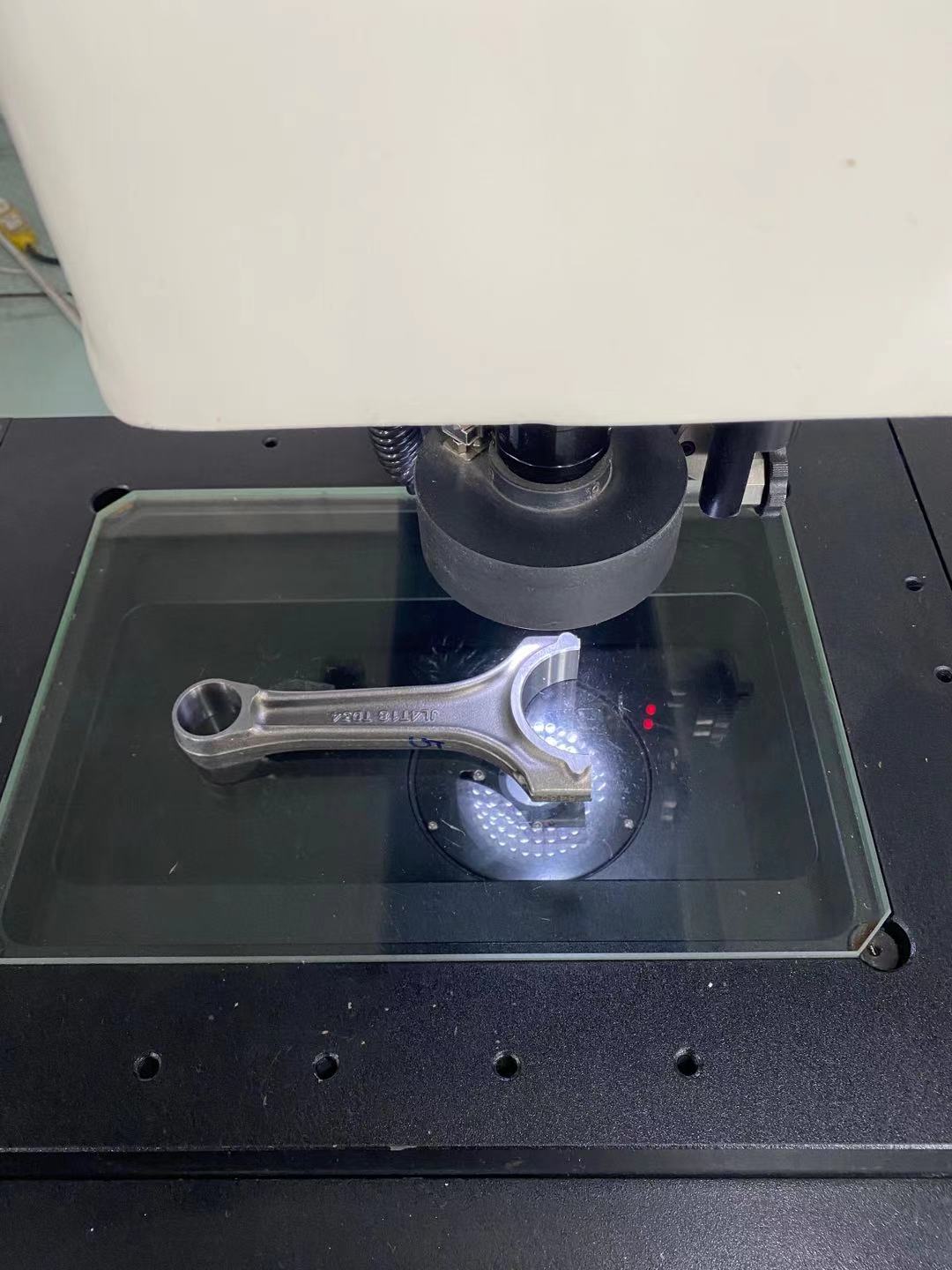A partial method of examining the quality of forged parts
2022-12-05
Forging parts quality inspection is divided into appearance quality inspection and internal quality inspection. Generally speaking, appearance quality inspection belongs to non-destructive testing, which is usually carried out by naked eye or low magnification. If necessary, non-destructive testing can also be used. For the inspection of internal quality, due to the requirements of its inspection content, some of them must adopt destructive tests, which are usually called anatomical tests, such as low-power test, fracture test, high-power structure test, chemical composition analysis and mechanical property test. Some can also use nondestructive testing methods. In order to evaluate the quality of forgings more correctly, destructive testing and nondestructive testing should be combined. In order to analyze the quality of forgings from a deep level, we should also use transmission or scanning electron microscope, electron probe and other auxiliary mechanisms.
The inspection methods of internal quality of forged parts can be generally summarized as: macroscopic structure inspection method, microscopic structure inspection method, mechanical property inspection method, chemical composition analysis method and non-destructive testing method.
Macroscopic tissue examination is to observe and analyze the macroscopic tissue characteristics of forgings by visual inspection or a low-power magnifying glass (generally a multiple of 30) × (below). For the macroscopic structure inspection of forgings, the commonly used methods are low corrosion method (including hot corrosion method, cold corrosion method and electrolytic corrosion method), fracture test method and sulfur imprint method.
The low-power corrosion method is used to check the cracks, folds, shrinkage holes, pore segregation, white spots, pores, nonmetallic inclusions, segregation agglomeration, flow line distribution, grain size and distribution of structural steel, stainless steel, superalloy, aluminum and aluminum alloys, magnesium and magnesium alloys, copper alloy forging parts, titanium alloy and other materials. However, for different materials, etching agents and etching specifications are different when displaying macroscopic structures.
The fracture test method is used to check for white spots, delamination, internal cracks and other defects in structural steels and stainless steels (except austenite), graphitic carbon in spring steel forgings, and overheating and excessive combustion of these types of steels. For aluminum, magnesium, copper and other alloys, used to check whether the grain is fine and uniform, whether there are oxide film, oxide inclusion and other defects.
The sulfur printing method is mainly used in some large structural steel forgings to check whether the sulfur distribution is uniform and the sulfur content.
In addition to the structural steel and stainless steel forging specimens used for low power test are not subjected to final heat treatment, other materials forgings are generally subjected to low power test after final heat treatment.

The inspection methods of internal quality of forged parts can be generally summarized as: macroscopic structure inspection method, microscopic structure inspection method, mechanical property inspection method, chemical composition analysis method and non-destructive testing method.
Macroscopic tissue examination is to observe and analyze the macroscopic tissue characteristics of forgings by visual inspection or a low-power magnifying glass (generally a multiple of 30) × (below). For the macroscopic structure inspection of forgings, the commonly used methods are low corrosion method (including hot corrosion method, cold corrosion method and electrolytic corrosion method), fracture test method and sulfur imprint method.
The low-power corrosion method is used to check the cracks, folds, shrinkage holes, pore segregation, white spots, pores, nonmetallic inclusions, segregation agglomeration, flow line distribution, grain size and distribution of structural steel, stainless steel, superalloy, aluminum and aluminum alloys, magnesium and magnesium alloys, copper alloy forging parts, titanium alloy and other materials. However, for different materials, etching agents and etching specifications are different when displaying macroscopic structures.
The fracture test method is used to check for white spots, delamination, internal cracks and other defects in structural steels and stainless steels (except austenite), graphitic carbon in spring steel forgings, and overheating and excessive combustion of these types of steels. For aluminum, magnesium, copper and other alloys, used to check whether the grain is fine and uniform, whether there are oxide film, oxide inclusion and other defects.
The sulfur printing method is mainly used in some large structural steel forgings to check whether the sulfur distribution is uniform and the sulfur content.
In addition to the structural steel and stainless steel forging specimens used for low power test are not subjected to final heat treatment, other materials forgings are generally subjected to low power test after final heat treatment.

X
We use cookies to offer you a better browsing experience, analyze site traffic and personalize content. By using this site, you agree to our use of cookies.
Privacy Policy



